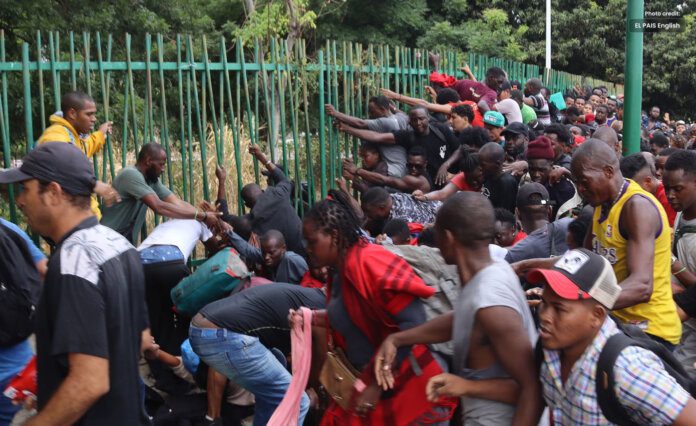Trump team used Title 42 to override asylum laws for illegal entries.
On Sunday, President Joe Biden made his first trip to the border as president, amid debate and criticism over the administration’s decision to devote resources to the southern border and pledged to halt the Title 42 immigration programme.
Nevertheless, just days later, he unveiled a new, restricted policy that would essentially expand the programme.
Theresa Cardinal Brown from the Bipartisan Policy Centre spoke with Nicole Ellis of the PBS NewsHour and argued that holding migrants in government facilities would increase the risk to the public’s health.
At the beginning of the COVID epidemic in 2020, the Centres for Disease Control and Prevention (CDC) invoked Title 42, giving border patrol agents the ability to deport migrants to their country of origin or the one they had most recently been in, which was frequently Mexico.
More than 2 million migrants have expulsed by U.S. Customs and Border Protection under Title 42 along the southern border since 2020.
Recidivism, or persons trying to cross the border illegally but caught and sent back before trying again, is partly to blame for this. Recidivism rates, according to Cardinal Brown, are at their highest levels in “many, many decades.”
Title 42 was one of the causes of the repeated attempts, which raised the number of persons.
In many cases, migrants had not deterred from trying to cross or recross the U.S.-Mexico border by bypassing the asylum process and sending them back to Mexico without due process as soon as they arrived in the country, in part because “it pushed people out of the country without any consequence to future immigration applications.”
A large number of refugees crossing the southern border “hope for help and protection.” Legally speaking, they might not be eligible for asylum, but we can’t just rely on punitive and deterrent measures to lessen that level of desperation, she continued.
The enormous volume of people crossing the southern border has also had an impact on how border agents perform their duties and caused local communities and advocates to draw attention to the lack of resources there.
Cardinal Brown said that border agents want to see
Cardinal Brown said that border agents want to see “a policy from Washington that they believe will really address the work that they believe they have challenged to do, which is basically taking people who are seeking asylum and having to care for them, take them in, deal with humanitarian issues and families and children in facilities that haven’t structured for that.”
Despite their best efforts, local leaders and advocates on the ground are ultimately “hoping the federal government will kind of reimburse them some of those moneys and say, hey, this is a federal problem, but these localities have had to deal with it and the federal government needs to come in and help us manage this,” Cardinal Brown explained.
Initial efforts by the Biden administration to stop using Title 42 at the border in 2022 failed after a number of states filed a lawsuit and took their case to the Supreme Court. The government must continue to enforce Title 42 in the interim, despite the high court’s agreement to consider the case.




